The Best 9 Things to Do in Jordan
Add 'float in the dead sea' and 'star gaze in Wadi Rum' to your top travel moments
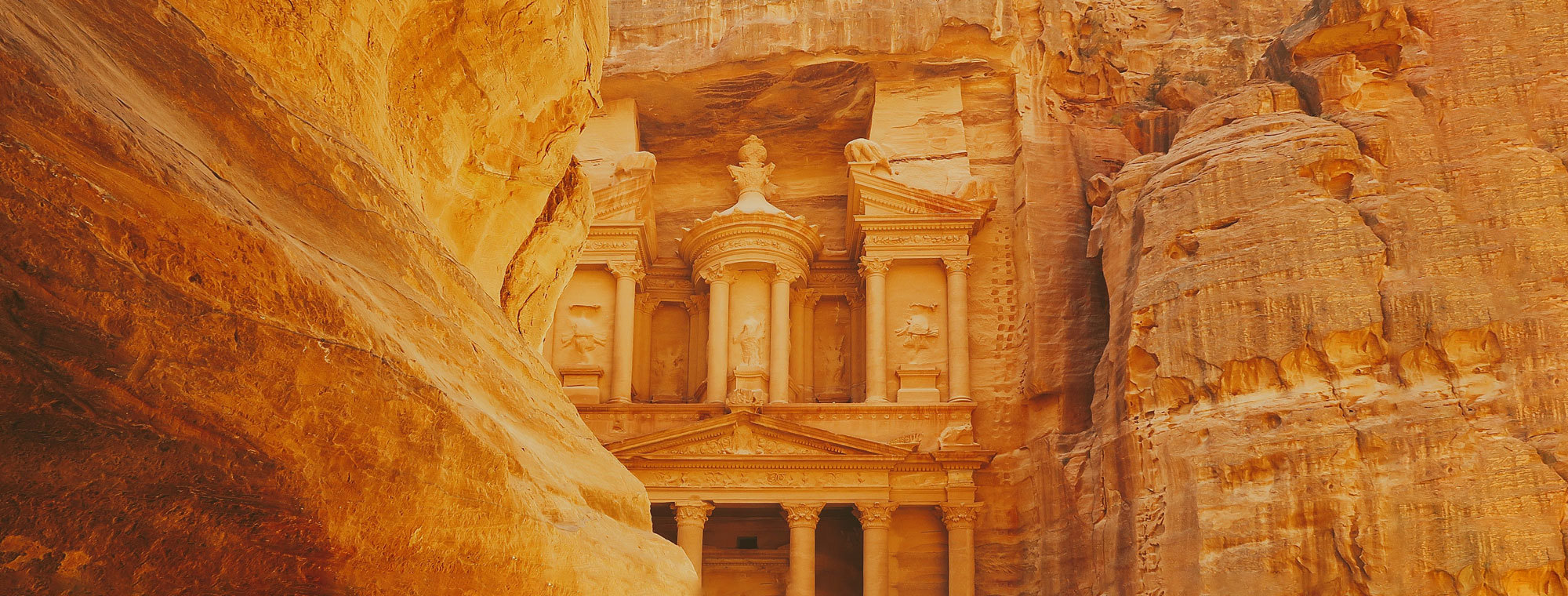
Exploring the Treasures of Jordan: Top 9 Things to Do in This Gem of the Middle East
Jordan, a land of ancient wonders and natural beauty, beckons travelers to embark on a journey through its rich history and stunning landscapes. From the bustling capital city of Amman to the archaeological marvels of Petra and the serene shores of the Dead Sea, Jordan offers a diverse range of experiences. In this article, we'll explore the top nine things to do in Jordan, highlighting the key attractions do's and don'ts, and experiences in this Middle Eastern gem.
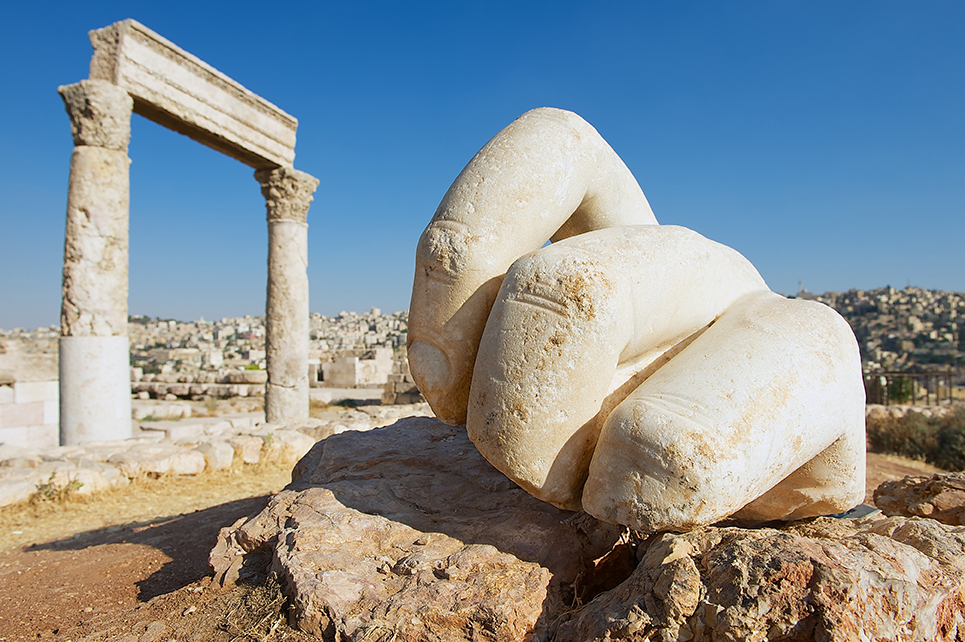
1. Discover Amman's Modern and Ancient Charms
Amman, the capital of Jordan, is a vibrant city where the past meets the present. Explore the bustling streets of downtown Amman, sampling delicious street food. Then visit the historic Amman Citadel. The stone hand at the Amman Citadel in Jordan is believed to be a fragment from a colossal statue of Hercules. This ancient artifact is a significant archaeological find and serves as a testament to the historical importance of the site, where various civilizations have left their mark over thousands of years.
2. Step Back in Time at Jerash
Just a short drive from Amman, Jerash is one of the best-preserved Roman cities in the world. Wander through its grand colonnaded streets, visit the Temple of Artemis, and imagine life in ancient times. Jerash is a must-visit for history enthusiasts.
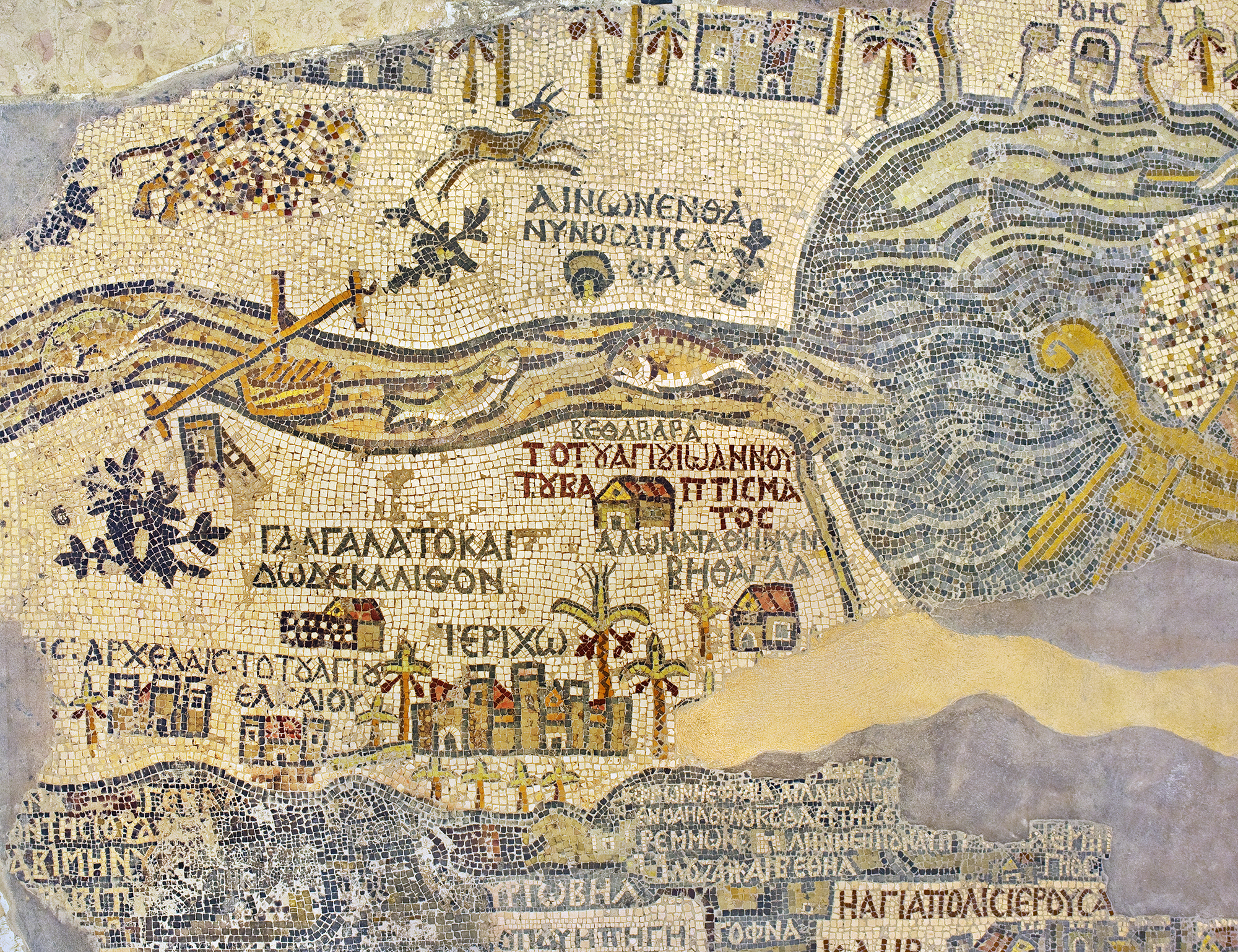
3. Explore the Mosaics of Madaba
Madaba is known as the "City of Mosaics" and is famous for its intricate mosaic artwork. Don't miss the chance to visit St. George's Church, which houses the famous Madaba Map – an ancient mosaic map of the Holy Land. This incredible artwork, dating back to the 6th century, provides a remarkable historical depiction of the region, making it a must-see for history and art enthusiasts alike.
4. Admire the View from Mount Nebo
Mount Nebo offers breathtaking views of the Jordan Valley and the Dead Sea. It is believed to be the place where Moses saw the Promised Land. Take in the scenery and explore the Moses Memorial Church.
5. Uncover the Secrets of Shobak Castle
Shobak Castle is a medieval fortress that stands as a testament to Jordan's medieval history. Explore its ancient walls and towers, and imagine the battles that once took place here.
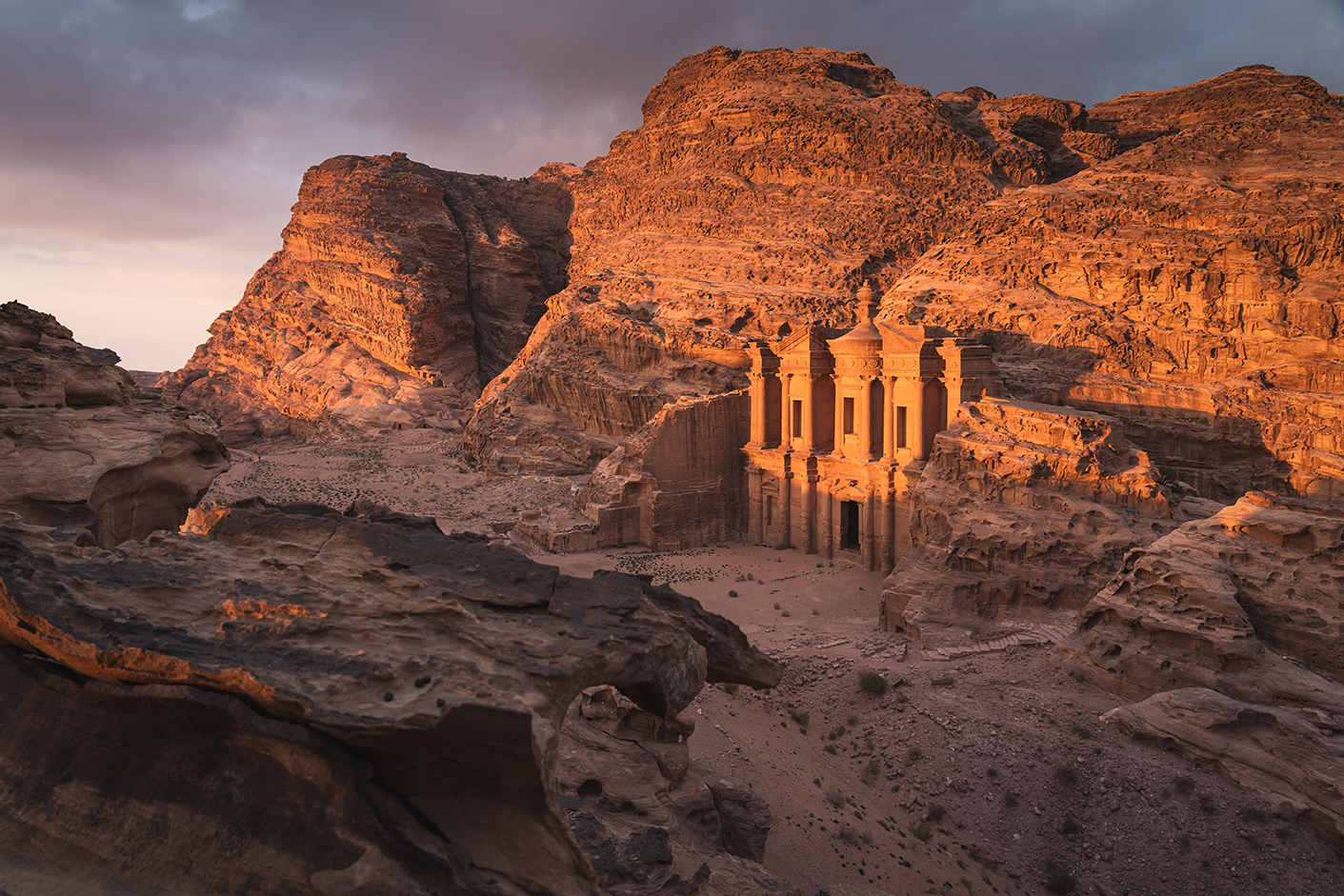
6. Journey to the Rose-Red City of Petra
Hidden amidst the rugged landscapes of southern Jordan lies Petra, an archaeological wonder that continues to captivate the hearts of travelers worldwide. This UNESCO World Heritage Site is undeniably Jordan's most iconic attraction. Whether you're walking through the Siq, gazing upon the Treasury, or wandering through the ancient city's streets, Petra's magic will leave an indelible mark on your soul. It is a testament to human achievement and a window into the rich tapestry of Jordan's history and culture.
The Adventure to Petra Begins: The Siq Canyon
The journey begins as you step into the Siq, a narrow and winding canyon that meanders through rose-red sandstone cliffs. The Siq's towering walls provide both shade and mystery, as you traverse its path, occasionally catching glimpses of the world beyond. As you walk deeper into the canyon, the anticipation builds, and the sound of your footsteps reverberates off the walls, creating an almost magical atmosphere.
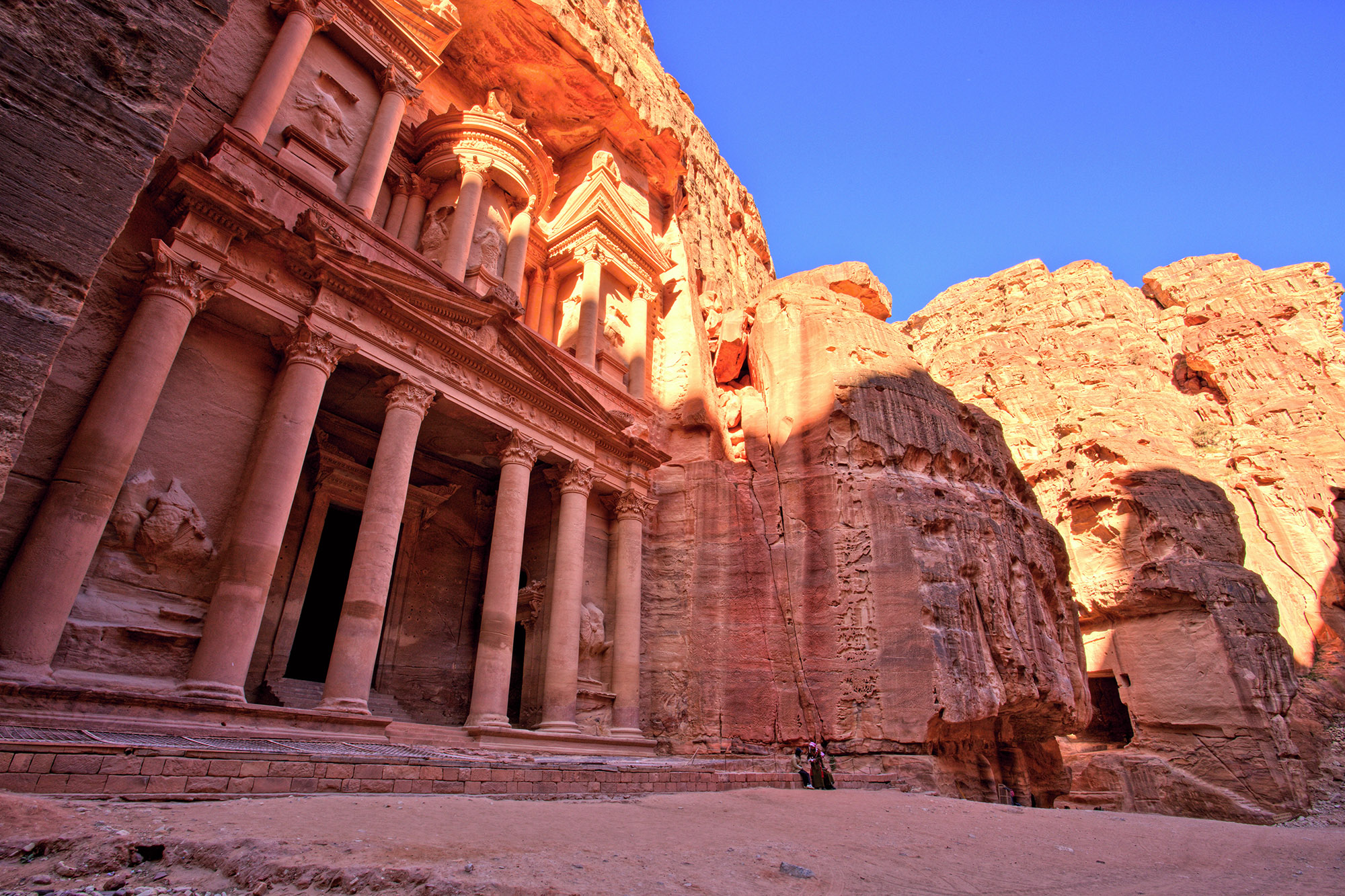
The Treasury at Petra: A Moment of Awe
As you emerge from the Siq's embrace, a breathtaking sight unfolds before your eyes—the Treasury. Carved into the rock face with astonishing precision, this intricate façade leaves travelers in awe. The Treasury's name originates from the belief that it once housed treasures, but its true purpose remains shrouded in mystery. Admire the detailed carvings and imagine the skilled hands that crafted this masterpiece over two millennia ago.
The Lost City at Petra: Beyond the Treasury
Petra is not merely the Treasury; it is a vast and sprawling ancient city. Take the time to explore its intricate network of tombs, temples, and facades carved into the rose-red cliffs. Admire the Royal Tombs, with their towering columns and exquisite details, and learn about the city's fascinating history.
The Monastery of Petra: A Triumph of Human Endeavor
A challenging but rewarding hike leads you to the Monastery, another architectural marvel carved high in the cliffs. The Monastery's grandeur is a testament to the skill and determination of the ancient Nabateans who called Petra home. Enjoy panoramic views of the surrounding desert landscape from this vantage point.
Petra's Roman Amphitheater: A Place of Gatherings
Continue your journey to Petra's Roman Theater, an ancient amphitheater that once hosted gatherings and performances. Imagine the bustling crowds that filled these seats centuries ago as you take a seat and soak in the historical ambiance.
Beyond the Sights: Petra's Rich History
As you explore Petra's marvels, remember that this city was a thriving trading hub, a crossroads of cultures, and a testament to the engineering prowess of the Nabateans. Petra's history is as fascinating as its architecture, and you can delve into it through guided tours or independent exploration.

7. Camp Under the Stars in Wadi Rum
Wadi Rum is a surreal desert landscape known for its stunning sandstone mountains. Make your way there on a jeep safari deep into the heart of Wadi Rum's majestic desert. Wadi Rum is known as one of the world's best place for stargazing. Enjoy the renown hospitality of the Bedouins with tea and a Zarb dinner served under the stars and join an astronomer for a private stargazing session, a magical experience.
8. Dead Sea Float and Mud Bath
When you embark on a journey to Jordan, there's one experience that should be at the top of your list – floating effortlessly on the mineral-rich waters of the Dead Sea paired with a revitalizing mud bath. The minerals in the water and mud are believed to promote skin health and provide relief from these conditions. Additionally, the high salt content helps to exfoliate the skin, leaving it soft and rejuvenated. This natural wonder is not just a body of water; it's a unique phenomenon that offers visitors a truly unforgettable experience. Don't miss the opportunity to float effortlessly on the salty waters and immerse yourself in the healing properties of the Dead Sea's mud.

What Does it Feel Like to Float in the Dead Sea?
As you wade into the Dead Sea, you'll immediately notice a sensation unlike any other body of water. Thanks to its high salinity, you'll find yourself effortlessly floating on the surface without any effort. The experience is both surreal and relaxing, as you lie back and let the buoyant water cradle you. It's a feeling of weightlessness that's often likened to floating on a cloud.
Rejuvenate with a Mud Bath
The Dead Sea isn't just about floating; it's also about indulging in a rejuvenating mud bath. The shoreline is rich in mineral-rich mud, known for its therapeutic and cosmetic benefits. Many visitors take the opportunity to apply this mud to their skin, letting it dry in the sun before gently rinsing it off in the salty waters. The mud is believed to have healing properties that can revitalize the skin and leave it feeling smooth and refreshed.
Is it Safe to Float in the Dead Sea? The Do's and Don'ts...
While the Dead Sea's buoyancy makes it a unique and experience, it's essential to first know some safety guidelines. By following these do's and don'ts, you can safely enjoy the remarkable experience of floating in the Dead Sea while ensuring your comfort and well-being. Floating in these mineral-rich waters is a unique and memorable part of any visit to Jordan, and with a little caution, it can be a truly enjoyable adventure.
The Do's of Floating in the Dead Sea
-
Test the Waters: Before you venture into the Dead Sea, it's a good idea to dip your toes and gradually ease into the water. The high salt content can be surprising, so take your time getting accustomed to the buoyancy.
-
Stay Upright: Maintain an upright position while in the water. Let your legs and lower body naturally float to the surface. Relax and let the water support you; there's no need to exert effort to stay afloat.
-
Protect Your Eyes and Mouth: Avoid splashing water in your eyes or mouth. The salty water can be irritating, so it's advisable to wear sunglasses or use protective eyewear.
-
Float Gently: Don't make sudden movements or try to swim vigorously. The buoyancy of the Dead Sea is such that you'll naturally float on the surface without needing to exert yourself.
-
Use the Mud Sparingly: While the Dead Sea mud has many benefits, avoid applying it to your face, especially around the eyes, as it can be uncomfortable if it gets in your eyes.
-
Rinse Thoroughly: After your mud bath, rinse off in the salty water to remove any excess mud before leaving the Dead Sea.
-
Stay Hydrated: The Dead Sea's climate can be quite hot and dry. Make sure to drink plenty of water to stay hydrated during your visit.
The Don'ts:
- Don't Dive: Never dive or jump into the Dead Sea. The water's buoyancy can cause you to float on the surface, potentially leading to injury if you dive headfirst.
- Avoid Splashing: As mentioned earlier, avoid splashing water into your eyes or mouth. If this happens accidentally, rinse your face with fresh water immediately.
- Don't Submerge Your Head: Avoid fully submerging your head in the water, as it can be challenging to bring it back up due to the high buoyancy. Keep your head above water.
- Avoid Open Wounds: If you have open cuts or wounds, it's best to avoid the Dead Sea, as the high salt content can cause discomfort and stinging.
- Don't Shave the Day of Your Float: Again, the high salt content can cause skin irritations and sting on freshly shaven skin.
- No Swimming Aids: Don't use swimming aids like inflatable rafts or noodles in the Dead Sea. They are unnecessary due to the natural buoyancy of the water.
- Limit Your Time: Prolonged exposure to the water can lead to skin irritation. It's recommended to limit your float to around 20-30 minutes and then rinse off thoroughly.
By following these do's and don'ts, you can safely enjoy the remarkable experience of floating in the Dead Sea while ensuring your comfort and well-being. Floating in these mineral-rich waters is a unique and memorable part of any visit to Jordan, and with a little caution, it can be a truly enjoyable adventure.
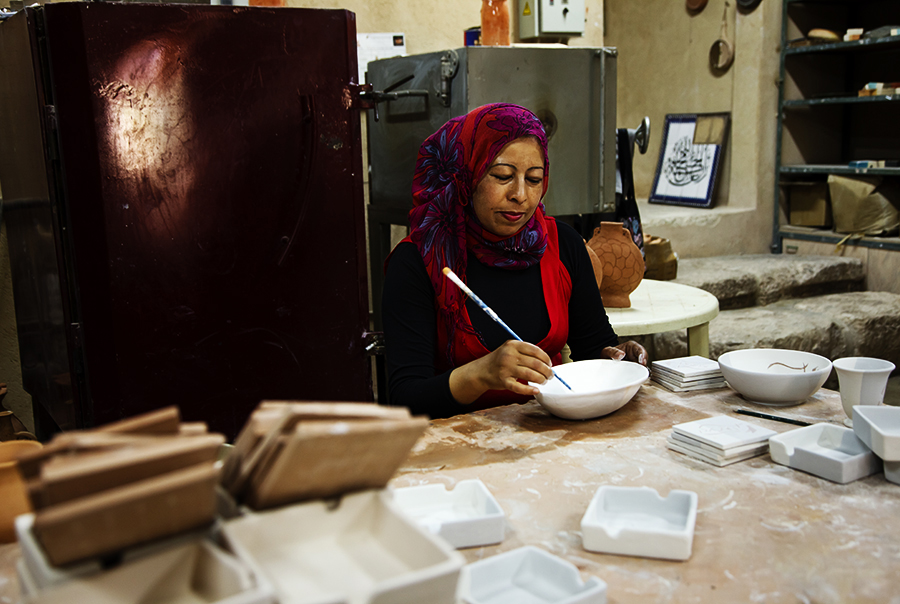
9. Support Iraq al-Amir Women's Association
Consider supporting the Iraq al-Amir Women's Association, a non-profit organization that helps empowers women of the area. The Cooperative aims to help women as they preserve their culture and teaches them how to make a variety of different heritage products, which are sold in the gift shop, as well as online. As the cooperative is managed and run by members of the community, it has created a number of job opportunities for women of all ages.
Why Guided Tours are the Best Way to Visit Jordan
Booking a guided tour of Jordan can offer numerous benefits to travelers, making their visit more enriching, convenient, and enjoyable. Plus, traveling in a foreign country can be intimidating, especially if you're unfamiliar with the local customs and practices. Having a guide can give you peace of mind and help you navigate any cultural nuances.
-
A guided tour can help you make the most of your time in Jordan. Itineraries are carefully planned, optimizing travel routes and ensuring you visit the most important and interesting sites within your available time.
-
Organizing transportation, accommodations, and entrance fees can be time-consuming. Guided tours typically handle all these logistics, ensuring a smooth and hassle-free experience.
-
Professional tour guides are well-versed in the history, culture, and geography of Jordan. They can provide valuable insights, anecdotes, and context that enhance your understanding and appreciation of the destinations you visit. Plus, guides can facilitate interactions with local people, allowing you to immerse yourself in the culture and traditions of Jordan. They can introduce you to authentic experiences that may not be easily accessible to independent travelers.
-
Arabic is the official language in Jordan, and while many people in the tourist industry speak English, having a guide who can communicate in both languages can be incredibly helpful for navigating day-to-day interactions.
-
Some archaeological sites or protected areas in Jordan require special permits or have restricted access. Guided tours often have the necessary permissions to visit these sites, providing you with unique opportunities.
-
Jordan is generally a safe destination for tourists, but having a knowledgeable guide can provide an extra layer of security and reassurance, especially when traveling to less-visited or remote areas.
Visit Jordan to explore ancient wonders like Petra and Jerash, witness breathtaking landscapes including the Dead Sea and Wadi Rum, and immerse yourself in a rich tapestry of history, culture, and warm hospitality in the heart of the Middle East. Jordan offers a captivating blend of natural beauty and historical treasures that promise an unforgettable travel experience.

















